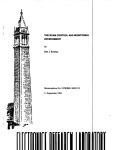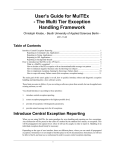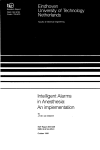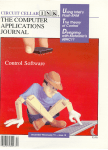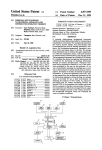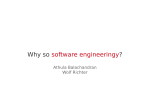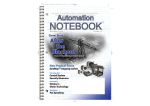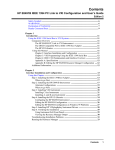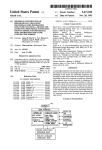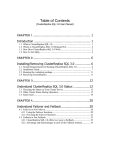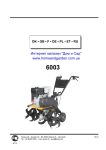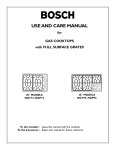Download Information delivery system and method
Transcript
1180058025 1 8A
United States Patent [19]
[11]
Patent Number:
5,802,518
Karaev et 21].
[45]
Date of Patent:
Sep. 1, 1998
[54] INFORMATION DELIVERY SYSTEM AND
FOREIGN PATENT DOCUMENTS
METHOD
0 701 220 Al
[75] Inventors: Isaak Karaev. Brooklyn; George
'
WO 95/33236 12,1995 WIPO V
OTHER PUBLICATIONS
Jacques Leisy. Bridgewater: Yuri
“
Umov‘ Forest Hills‘ all of NY’;
.
m”
Multex Publisher
Stephen Zucknovich Wayne N J
'
European Pat. O?'. .
338
Baird. New Yorlr: [fave] Blazek. Forest
Hills; Eduard Kltaln. Brooklyn;
Dmitry Prohorov. Forest Hills;
'
3/1996
.
. Multex Systems. Inc.. copyright
1994‘ 6 pagcs'
' '
Gupta. Udayan. “From The Inside Out.” Information Week.
[73] Assignee: Multex Systems, Inc.. New York. NY.
May 22‘ 1995‘ 3 pages‘
GFI News Release. 2pgs. Jun. 5. 1996. New York.
[21] Appl. NO-I 658,966
[22] Filed:
J‘m' 4’ 1996
[51] rm. (:1.6 .................................................... .. G06F 17/30
[52] US. Cl. ................................... .. 707/9; 707/2; 707/10;
(List continued on next page.)
Primary Examiner—Wayne Amsbury
Am’mey' Age”, 0' ‘Wm-K690“ & K990“
[57]
ABSTRACT
707/5; 395/200.59
[5 3]
Field of Search ................................. .. 395/6. 200.59;
The Secure electronic distribution of research documents
707/9_ 2_ 10_ 5
[56]
over the world wide web to investors who are authorized to
receive said research documents. A repository server
receives research documents from contributors. Also
received are corresponding document pro?les with informa
tion relating to each research document including authori
References Cited
U'S- PATENT DOCUMENTS
5,089,956
5,132,900
$247,661
5,262,942
2/1992 MacPhail .............................. .. 395/601
711% Gilchrist e131,
__ 395/609
9/1993 Hager et al.
.. 395/615
11/1993 Earle ............. ..
5265242 11/1993 Fujlsawa 6* =11
$297,032
.. 395/237
database for full text searches. Aweb server is coupled to the
---- -- 395/603
repository server and coupled to the world wide web. The
395/237
web server receives requests ?om investors for research
3/1994 Trojan 6‘ a1‘
2:5” 613]‘ "
’
‘
lam)“ infolma?m specifying who is P?mimd 1° access
each research document. The repository server includes a
?rst database for structured query searches and a second
322523
an """" "
documents that satisfy a query. The web server determines
whether the ?rst database or the second database should be
5,333,246
7/1994 Nagasaka
.... .. 395/133
5,339,392
5,410,693
M994 Risberg at at i
4/1995 Y“ a 3L _______ N
____ U 395/333
395,611
searched based upon the type of query. The repository server
transmits to the web server a list of research documents that
5,452,460
5,502,637
9/1995 Distdberg et a1, .
3/1996 Beaulieu et a].
395/632
395/236
satisfy the query and which the investor is authorized to
access according to the authorization information. The web
5,511,156
4/1996
5,513,126
4/ 1996 Harkins 6! a1
Nagasaka . . . . . . . .
5,539,865
5,572,643
7/1996 Gentile ...... ..
11/1996 Judson
.
. . . . .. 395/133
server formats the list of documents according to a template
364/514 A
form. Optionally. queries can be optimized. The system has
a control mechanism to prevent concurrent unauthorized
Meske, 1: :1‘ a1- Amram 8
. ..
-
395/115
395/793
5,600,831
2/1997 Levyet al
5,649,186
7/1997 Ferguson ............................... .. 395/610
by two F cop1° “mg
th
6 Sam‘:
ID
'
395/602
22 Claims, 5 Drawing Sheets
~30
341v
‘0
\I/ewuSarverAIO
ug?m‘mk
1 N Central Site
-\
~12
11
11!
av»
12
\?uwuv
‘1 Q
wmmm a
“A;
1°
22
grrrsjrbxm’
Vmnr
22:35:“
46 m
15m
cc‘mribmc" Contributor
Contributor 0
Workstation 6
Workstation
wml‘slallon A
‘
a
C
um
A
"1
3"" 5m" 8
m
'_
lpassword comb‘
5,802,518
Page 2
OTHER PUBLICATIONS
Multex News Release. Multex Systems. Inc. Aligns With
Top Wall Street Information Providers. 2 pp.. Jun. 5. 1996.
Inside Market Data. The Newsletter of Electronic Financial
Information. 3 pp.. Jun. 17. 1996. Waters Information Ser
vices. Inc.
Multex News Release. Multex Systems. Inc. Doubles Its
SIA Report Market Pulse. Multex Raises Capital; Signs with
Reuters. Bloomberg. GFI. Wall Street & Technology. 1 p..
Private Capital Financing. 2 pp.. Jun. 5. 1996.
Aug. 1996.
US. Patent
Sep. 1, 1993
Sheet 1 of 5
LwN?E52mwm M
18/
\/
\v5: 5:0
5,802,518
Em:
‘ESQ U
3w:
S31E0
w w
0
mn
m6n>2$w5
6)2.60
6/
3m
emr
6:5 0
50:2905
“0523. ,0
2<0:5m92.8:30
2r
m.
-
0.housnEco
cm
4.62m
2wveq_.
if
US. Patent
Sep. 1, 1998
Sheet 2 of 5
5,802,518
Bulletin Board
[120
[122 [124
[126
Refresh Query Summary AM Notes
Latest 100 of 143 Documents/1S32
Submit Company
Pgs Size Symbol
10:41AM Equitable Securities
10:39AM Equitable Securities
10:39AM Equitable Securities
10:37AM Punk, Ziegel & Kn...
10:36AM Merrill Lynch
[128
[130
View All148
Long Form?
SYN Headline
Roger Industries
Mid States El £1
72K
75K
HPS
Leggett & Platt
Yes HealthPlan Service
51K ASDOF
17K CNG
12K
55K
ASSIDOMAN: Strong
CONSOL NAT GAS: A
Strategy Ugdates
Daily Ogtimized, T
10:14AM Merrill Lynch Test
64K SKODA...
MLNONO
Eastern Euroge Da
CURRENT HESTFllCTl
10:14AM Janney Montgomery...
35K ADCO
Adco Technologies
10:35AM
10:21AM
10:18AM
10:18AM
10:14AM
10:14AM
10:14AM
10:04AM
Merrill Lynch
Merrill Lynch
Merrill Lynch
lNG Barings
Merrill Lynch Test
MLN02 4
Janney Montgomery... 7 57K
Janney Montgomery... 86 469K ANST M...
Brown Brothers Ha... 15 172K CL HNZ...
__1_Q:O2AM
n
Merrill LynchLl
102
104 l
r
2\l 52K\l HNKD
24-Hour Restrictions
Statistical Pa es
Mid-Atlantic Revi
Colgate-Palmolive
\l
l 108
l 110 111t
1 6 0106
FIG. 2
\112
US. Patent
212
/
Sep. 1, 1993
214
/
Submfl :Count Only
1 4
Document Query
/216
y
Summary
AM Notes
S mbol:
/218
Reset I BBoard
Symbol Guide
K202
F0 Period
Ofi 204
5,802,518
Sheet 3 of s
\220
Last 7 Da 5
y
1
Ke ords:
206
Contributors:
E3
[AII Contributors]
i
Adams, Harkness & HiII
Alex Brown & Sons
Auerbach Grayson & 00., Inc.
Brown Brothers Harriman & Co.
Industries:
21-0
Chicago Corporation
1,
[All Industries]
ADVERTISING
4
I
AEROSPACE
AGRICULTURE
AIR TRANSPORTATION
APPAREL & TEXTILES
FIG. 3
E
US. Patent
Sep. 1, 1998
5,802,518
Sheet 4 of 5
Query Results
[120
L1 22
124
[126
1 28
f1 30
404‘ Refresh _ ‘ Que 1 Summary lLAM Notes View All 115 Long Form]
Lastest 100 of 115 Documents, Sor1ed by Score, for Last 30 Days 21 and ("strong b
Scr Release Company
Pgs Size
Symbol SYN Headline
1
1
1
1
1
1
Apr 22
Apr 22
Apr 22
Apr 22
Apr 22
Apr 22
Alex Brown & Sons 3 132K
Alex Brown & Sons 4 89K
Alex Brown 8 Sons 9 225K
Alex Brown & Sons 9 348K
Alex Brown 8 Sons 93 620K
Alex Brown 8 Sons 7 689K
SUI
HRC
lWBK
MRK
ALTR A...
DTOP
SUN COMMUNITI
dEALSQUll?
INTERWEST BAN
MERCK 8 CO.
WEEKLY NOTES
DESKTOP DATA
1
1
Apr 23
Apr 23
Alex Brown & Sons
Alex Brown & Sons
DELL
GDT
DELL COMPUTER
GUIDANT CORPO
1
1
1
1
1
1
Apr 23
Apr 23
Apr 24
Apr 24
Apr 24
Apr 25
Alex Brown & Sons 4 91 K
Alex Brown 8 Sons 8 345K
Alex Brown 8 Sons 4 81K
Alex Brown & Sons 6 94K
Alex Brown & Sons 9 187K
Alex Brown & Sons 10 281K
HCR
JNJ
ATML
CSCC
EVGM A...
AMRD C...
HEALTH CARE 8
JOHNSON & JOH
ATMEL CORPORA
CASCADE COMMU
EVERGREEN MED
BROADCASTlNG :
1
1‘
Apr 25
Aor25
Alex Brown 8 Sons
Alex Brown & Sons
MCSY
ODR RE
4021 1021
1
104
5 126K
5 88K
4
4
82K
80K
106108 110
FlG. 4
MEDlC COMPUTE
\ ALEX BROWN
112
5.8025 l 8
1
2
INFORMATION DELIVERY SYSTEM AND
METHOD
programs can provide the web server with an identi?cation
FIELD OF INVENTION
code identifying the particular browser as well as the user‘s
Internet Protocol (“IP") address. However. when a user
The present invention is directed to a computer-based
system and method for the electronic distribution of
information. and more particularly. for the distribution of
information via the Internet to authorized recipients.
may appear to have the same IP address.
To prevent concurrent use of a user’s identi?cation code
When a user initially accesses a web server. most browser
accesses a web server through a proxy server. many users
and password (e.g.. to prevent the user from distributing the
user’s identi?cation code and password for use by others)
when a user initially accesses a web server. the web server.
COPYRIGHT NOTICE
using current password technology. can prevent other access
with that identi?cation code for a predetermined period of
A portion of the disclosure of this patent document
contains material which is subject to copyright protection.
time. However. if the user moves to another computer or
The copyright owner has no objection to the facsimile
browser program. then the authorized user will be prevented
from accessing the web server from the new computer or
browser program.
reproduction by anyone of the patent document or patent
disclosure as it appears in the Patent and Trademark O?ice
patent ?le or records. but otherwise reserves all copyright
Thus. a secure sign-on procedure is needed that prevents
multiple users using the same identi?cation code and allows
rights whatsoever.
BACKGROUND OF THE INVENTION
20
Current computer technology allows documents and other
information to be distributed electronically. from computer
to computer. Electronic distribution is generally cost effec
tive when compared with hard copy distribution methods.
Global computer networks. such as the Internet. enable
information to be distributed to a wide range of people at
locations around the world. One of the many advantages of
an authorized user to move to another computer or browser
program and still be permitted to access the secure web
server.
When providing information via the WWW. information
providers can. in a crude way. “customize" the information
25
for a user. One simple example of customization is providing
the user with the results of a query. Here. the user submits
a query to the web server. e.g.. by completing a form. and.
based on the user‘s request. the web server creates a web
the Internet. particularly the World Wide Web (“WWW”). is
that the communication protocols used are non-proprietary.
page (or form) comprising information satisfying the query
and transfers this web page (or form) to the user’s browser
thus enabling end users to access and use the Internet 30 program for display. In such systems. the program used to
without the need for customized hardware or software.
create the web page (or form) is “hard coded”. so that if the
Often. an information provider wishes to provide infor
information provider wishes to change the format of the
mation to users on a controlled basis. For example. the
information. this program must be recoded or replaced.
information provider may want to provide information only
to those users who have paid a fee or completed a registra
tion process. and also may want to restrict access to certain
types of information to certain classes of users. Additionally.
35
the information provider may require that the format of the
Existing methods of providing information to W users
do not enable different users to be automatically provided
with di?’erent views of the information. Thus. a procedure is
needed to enable the provision of customized views of
requested information to W users.
types of information available ?om a particular information
user.
time consuming.
Further. every user who submits the same query to the
web server will receive the same results in the same format.
information provided to one user be different from the
format of the same information provided to another user or
class of users.
Further. some users only may be interested in certain
provider. Users may wish that the information received from
an information provider be output in a format speci?c to that
Recoding or replacing such programs is inefficient and often
When a user submits a query to a web server. the web
45
server will typically format and submit the received query to
a database program or search engine. There can be many
types of queries that a user submits via an information
Existing technology allows an information provider who
provider’s web server. For example. some queries may
distributes information via the W to restrict access to
authorized users by means of. for example. a user identi?
request information based on categories contained in a
cation code and/or password However. current password
authorization methods used on the WWW have a number of
relational database (e.g.. all presidents who were born in
Virginia) while other queries may require full text searches
of textual documents (e.g.. all documents containing the
words “se " and “IBM"). Currently. information providers
signi?cant problems. When using a browser program. such
maintain one database of information that is used to obtain
as Netscape’s Navigator program or Microsoft’s Internet
Explorer program. to access web pages. a user is simply 55 the results of all types of queries. However. while a database
search engine may be fast and efficient in obtaining search
making a request to a remote web server (having a unique IP
results for some types of queries. it may be slow and
address) for a ?le. This ?le is stored in the user’s computer
local memory and is output by the browser program.
Typically. web pages are in HTML format (Hyper’l‘ext
ine?icient in obtaining search results for other types of
queries.
Markup Language). Each time the user “moves” to a new
Moreover. when responding to queries via the WWW. the
web page. the browser program makes a new request to a
web server is accessed by many users. Due to communica‘
web server (which may be the same or another web server)
tion delays over the Internet. it is wasteful to tie-up the
for a ?le. Thus. although a user may provide a password to
database program or search engine until each user has
obtain a ?le from a web server. the user typically does not
received the full results of the user’s query. It would be
log-out when the user has ?nished with this ?le—the user 65 desirable in some instances to provide a search mechanism
simply issues a request for a ?le on another web server or
that allows asynchronous searching of a database by mul
closes down his or her browser program.
tiple web users such that the database program or search
5.802.5 l 8
3
4
engine can take advantage of communication delays when
sewing multiple users.
Once the user has provided the ID and password. the
repository server will determine what information that user
is authorized to receive. According to the present invention.
Thus. in summary. an Internet information delivery sys
tem is needed that has a secure but ?exible password control
mechanism so that information is provided only to users
who are authorized to receive it. that efficiently retrieves any
each user has authorization to access all or a subset of the
information stored at the repository server.
In the representative embodiment. the repository server
can provide the user with a list of new documents that have
requested information. and that customizes the views of
been recently received by the repository server and which
information provided to users in a ?exible and robust
that user is authorized to access. The user may also request
manner.
10
SUMMARY OF THE INVENTION
The present invention provides an electronic information
and view documents from these lists.
distribution system that allows remote users to receive.
access and query information that is stored in electronic
Different users may be permitted to access different
subsets of the documents stored at the central repository.
According to the present invention. the web server is
coupled to at least two database search engines in the
repository server. At least one search engine performs at
least full text searching of textual documents. At least one
other search engine performs at least searching on pre
de?ned ?elds of information. When a search is submitted by
the user to the web server. it is determined what type of
form at a central server. called a repository server. Ideally.
users communicate with the repository server via the Inter
net. The repository server is coupled to the Internet by a web
server. The repository server comprises or is coupled to a
plurality of databases of information stored in electronic
form.
Preferably. the repository server is coupled to one or more
remote contributor workstations. The information that is
stored at the repository server is received from the contribu
tor workstations in electronic form. According to the repre
sentative embodiment of the present invention. the informa
search is required. and the appropriate query (e.g.. full text.
25
cally would contain text. data. charts. graphs. spreadsheets
and the like. or combinations thereof. and may be in many
formats. It will be appreciated that any information that can
be stored in digital form. such as photographs. videos. sound
conducted in parallel.
In the representative embodiment. the repository server
recordings. etc. may be stored in the ?les received from the
contributor workstations. In the representative embodiment.
verted at a central site into predetermined format. e.g.. for
printable documents. a common viewing format such as. for
search on prede?ned ?elds) is formulated and submitted to
the appropriate search engine. The search engine returns a
results set to the web server. Typically. the results set will
comprise a list of documents satisfying the query and that
the user has authorization to access. This architecture
ensures that the most e?icient search engine is used to obtain
the search results and allows more than one search to be
tion received from the contributor workstations are ?les
comprising one or more documents. These documents typi'
?les received from the contributor workstations are con
a list of documents that ?t certain user-speci?ed search
criteria. A list of the documents that match that search
criteria and which the user is authorized to access is pro
vided to the user computer. The user can then select. request
35
includes a number of optimizers. An authorization optimizer
builds the least expensive (in terms of execution time)
search selection clause which will restrict the user’s query to
the database subset that the user is authorized to access. A
example. PDF format. and thereafter provided to the reposi
sorted queries optimizer speedily provides users with the
tory server. In the representative embodiment. each docu
ment submitted to the repository server is accompanied by
results set even when the number of elements in the results
set is substantial. The web server sends a query block to
a document pro?le comprising information organized
according to prede?ned ?elds relating to the document.
repository server for optimization and the actual database
The web server includes a web server program. The web
query is built by a database server.
Communication delays over the Internet are used to make
server also includes a web server helper application using
the appropriate API such as. for example. the Common
apparent response time at the web server faster by interleav
ing server access and response through an asynchronous
Gateway Interface (CGI) program. BGI. NSAPI or ISAPI.
According to the representative embodiment of the
protocol to the search engine.
present invention. each user has a user computer. such as. for
information provided to users. The web server has access to
example. a personal computer with an Intel Pentium pro
a number of different template forms. The template forms
The web server can provide customized views of the
cessor and a fast modem that the user can use to connect to 50 are written in a novel computer language. called herein a
“research access language" (or RAL) that describes how to
format a HTML document and integrate the information
storage devices. In the representative embodiment. the user
from results set into this format. The web server interprets
computer executes Netscape’s Navigator 2.1 browser pro
the template form and creates a HTML page comprising the
gram However. other browser programs. such the Mosaic
browser or Microsoft's Internet Explorer 2.0 browser could 55 information from the results set. The web server may have
a number of template forms. for each type of query. for each
also be used. As used herein. the browser programs executed
user or class of user. etc. Thus. each user or class of users
by the user computer will be termed “Internet browsers.”
the Internet. The user computer has one or more local
When the user initially accesses the web server. the user
may receive information in a format de?ned for that user or
is required to provide a user identi?cation code (“ID”) and
a password. The web server submits a login request to the
C61 program to verify that no other user is using the same
ID. According to the present invention. a user is permitted to
class of users. The template forms of the present invention
provide an additional advantage. Whenever the information
provider wishes to change the output fonnat of the infor
access the web server from a di?erent user computer or
used by the web server. Template forms can easily be created
(without having to “hardcode” any program) and can be
using a different Internet browser; however. the present
invention prevents the user (or other users) from “concur
rently" accessing the web server from more than one com
puter or Internet browser using the same ID.
mation provided to users. a new template form is created and
loaded for use without having to take the web server off-line.
The present invention is ideally suited for providing
investment research reports to investors and investor advi
5.8025 l 8
5
6
sors. Brokerage and investment banking ?rms create
16. 18 are used by brokerage and investment banking ?rms
mounds of investment research reports on a daily basis
to submit reports to the repository server 2. Optionally. the
contributor workstations 14. 16. 18 may be coupled to the
repository server 2 via proprietary network comprising a
plurality of contributor servers 20. 22. Alternatively or
concerning thousands of companies and industries. These
reports are provided to investors in electronic form. At
present. these reports are distributed over proprietary
networks. requiring the installation and maintenance of
additionally. a contributor workstation may provide reports
expensive hardware. software and communication lines.
to the repository server 2 via the Internet.
Because of this expense. the number of users who have
access to these proprietary networks is limited. In the
In the representative embodiment. the contributor work
stations execute a program called Multex Contributorm.
described in detail in the user manual titled “MX
representative embodiment. the present invention enables
investment research reports to be securely distributed to
Contributor-User Guide” available from Multex Systems.
Inc. of New York. NY. and expressly incorporated herein by
investors over the Internet. The present invention overcomes
the disadvantages of Internet (e.g.. slower than proprietary
reference. The Multex ContributorTM program is a real-time
networks. less secure. user interface limited to HTML
format) and enables investment research reports to be dis
Windows-based document indexing and transfer program
15 used to disseminate reports to the central site I. The con
tributed to a wider range of investors who are authorized to
tributor simply completes a form (a document pro?le)
receive such reports.
displayed on the screen of the contributor workstation 14.
16. I8 and. at the speci?ed time. the Multex ContributorTM
program transfers the report. along with the information in
the completed form. to the central site 1.
At the contributor workstation l4. 16. 18. the contributor
BRIEF DESCRIPTION OF THE DRAWINGS
FIG. 1 is a diagram of the overall system architecture of
the present invention.
FIG. 2 is an example bulletin board screen display.
FIG. 3 is an example document query form screen display.
FIG. 4 is an example query results screen display.
FIG. 5 is a system architecture diagram of an enhanced
completes a form relating to the report. First. the contributor
selects a report for distribution. The report is stored. usually
25
contributor workstation 14. 16. 18. The report may be in any
system according to the present invention.
standard electronic format. for example. Pagemaker.
Microsoft Word for VVrndows. Corel WordPerfect. etc. The
DETAILED DESCRIPTION
For ease of description. the embodiment of the present
invention described herein is that used for the electronic
as a ?le. in electronic form on the contributor workstation
14. 16. 18 or on a server or network drive coupled to the
30
form has ?elds relating to the report. for example. title.
author. subject. date and time of creation. distribution level
(setting distribution to a default group of investors or one of
distribution of investment research reports and morning
a set of prede?ned groups of investors) and expiration time.
meeting notes (“reports”) to investors via the Internet’s
World Wide Web (“WWW”). However. the invention is not
so limited. and can be used. where appropriate. for the
electronic distribution of other types of information via other
types of networks.
Optionally. the contributor can enter additional information
35
Once the report has been selected and the form completed.
the user issues a “contribute” command to the Multex
Brokerage and investment banking ?rms spend large
ContributorTM program and the report and all the informa
tion in the form is electronically transmitted to the contribu
tor server 20. 22. In the representative embodiment. the
reports are “pushed up” from the contributor servers 20. 22
to the central site 1.
At the central site 1. the reports are processed Typically.
sums of money creating. printing and distributing thousands
of graphic-rich research reports to investors (e.g..
customer’s. remote sales o?ices. investment advisors.
brokers. portfolio managers. etc.) Brokerage and investment
banking ?rms distribute their reports only to selected inves
tors (e.g.. their customers). However. each investor may
receive reports from more than one brokerage or investment
banking firm. Investors require access to these reports on a
timely basis. It is also desirable to search all available
reports for those reports that may be of interest to the
investor. The representative embodiment of the present
invention provides an advanced. secure system to distribute
in the form. such as. for example. ticker symbol. industry
group. synopsis. country. region. currency. etc.
45
the central site comprises a network of computer processors.
At the central site 1. each report is converted in to a
predetermined a predetermined format. In the representative
embodiment. all reports received at the central site 1 are
converted at the central site 1 into a format that can be read
50
reports on a timely basis from brokerage and investment
banking ?rms to investors and that allows investors to access
by the Acrobat Exchange program. available ?"om Adobe
Systems. The reports are then provided by the central site 1
to the repository server 2.
Where desired. the repository server 2 can also receive.
store and enable the distribution of other useful information.
such as. for example. news reports received from wire
and query a database of reports located at a remote location.
As used herein. the terms “investor" and "user” include 55
any end user who is permitted to receive or access infor
services. government reports. product reviews. etc.
mation via the present invention. such as. for example.
The repository server 2 comprises or is coupled to at least
two database servers 11. 13. Each database server is coupled
to a database storage device 10. 12. Arelational database 10.
customers of brokerage and investment banking ?rms.
employees of brokerage and investment banking ?rms.
investment advisors. brokers. bankers. portfolio and fund
11 allows ?eld searching. In the representative embodiment.
managers. journalists. analysts. economists. university
professors. MBA students. etc.
Referring now to the drawings. and initially FIG. 1. there
is illustrated an overall system architecture according to the
present invention. A central repository server 2 is coupled.
via a central site 1. to one or more remote contributor
workstations I4. 16. 18. The contributor workstations 14.
the relational database 10. 11 is an SQL database server 11
coupled to a storage device 10. A full text database l2. 13
65
allows word or text searching. In the representative
embodiment. the full text database 12. 13 is a full text search
database server 13 (for example. a full text search engine
available from Fulcrum of Ottawa. Canada) coupled to a
storage device 12.
5.802.518
7
8
The information contained in the form is indexed in the
relational database 11 to allow retrieval of the report by
searching on such ?elds. e.g.. searches by author. date.
industry. etc. Where necessary. information in the form
received from the contributor is mapped into “common”
terminology as used by the relational database 11. For
example. the terms “sports utilities” and “minivans” may be
document delivery service of the present invention. If the
investor chooses to proceed. the investor selects the “log-in"
option from the initial web page.
User Veri?cation:
5
mapped and stored as the term “automobile.” ASCII text is
extracted from the report and stored in the full text database
12. 13 for full text searching.
The repository server 2 provides investors with lists of
reports received from the contributor workstations 14. 16. 18
and allows investors to request lists of reports that ?t certain
criteria. The investor can select reports from these lists to
downdoad. view and/or print. Generally. lists of reports can
be generated by the web server 4.
The ?rst step the web server 4 takes in handling an
investor request is verifying that the investor is permitted to
access the information stored at the repository server 2. This
is accomplished using the standard veri?cation procedure
built into the communication protocol between Internet
browsers and web servers.
The web server 4 uses Netscape’s Commerce Server’s
ability to call custom veri?cation subroutines when a user
tries to access CGI’s and web pages. The web server 4
executes a subroutine and. using Netscape’s NSAPI.
receives the ID and password that the investor is asked to
provide by the server/browser. and then veri?es the II) and
report. The repository server 2 can transmit that list to the
password against a database of authorized users (the user
database) maintained at the repository server 2. If the user is
veri?ed. the Internet browser will be given a verification
signature. An investor who is not in the user database. or
enters an incorrect password. is denied access to CGI‘s and
report’s contributor on a regular basis and/or when requested
web pages on the web server 4 by simply having the
The contributor of a report can be noti?ed that a particular
investor has accessed that report. The repository server 2
maintains for each report a list of those who accessed that
by the contributor.
subroutine return an “Access Denied” ?ag to the web server
4. This subroutine maintains an open connection to the user
The repository server 2 is coupled to a web server 4 which
in turn is coupled to the Internet via. for example. a Tl or 25 database to improve performance.
ISDN connection. The web server 4 is a high powered server
Whenever an investor makes a query for a list of reports.
the investor’s Internet browser sends an HTTP (hypertext
computer that runs a web server program. In the represen
tative embodiment. the web server 4 executes Netscape’s
transfer protocol) request that represents what the user wants
to the web server 4. If the request does not have a veri?
Commerce Server program. The web server program allows
cation signature attached to it. the web server 4 sends a
web pages (in HTML format) to be accessed by investors.
The web server 4 also executes other programs and subrou
command back to the Internet browser. causing it to prompt
the user for an ID and password. The Internet browser will
tines as required.
then return this information to the web server 4. which will
Each investor has a user computer 6. 8. such as. for
verify that the user is entitled to access the reports stored at
example. a personal computer with an Intel Pentium pro
cessor and a fast modem. In the representative embodiment. 35 the repository server 2. If the user is veri?ed. the Internet
browser will be given a veri?cation signature. If not. the user
the user computer 6. 8 executes an Internet browser
program. such as. for example. Netscape’s Navigator 2.1
will be prompted again for his ID and password. Once
browser program. The Internet browser can read ?les in
access is veri?ed. the web server 4 will start the CGI
HTML format. In the representative embodiment. the Inter
program named in the original HTTP request. along with any
run-time parameters that are speci?ed in the request. The
CGI program ?rst veri?es that the user making the request
(whose ID is passed to the CGI program by the web server
4 through an environment variable) is the only one using that
ID at that moment. This is done by the following method:
net browser has access to a plug-in program that can read 40
?les in the predetermined format. In the representative
embodiment. the plug-in is the Acrobat Exchange program.
available from Adobe Systems that can read ?les in “.pdf’
format. The user computer 6. 8 can connect with the Internet
via. for example. a commercial Internet Service Provider.
The web server 4 includes to a web server helper
application. which in the representative embodiment is the
CGI (common gateway interface) program. that is activated
by investors through web pages provided by the web server
a. The CGI program gets the value of the Internet browser
“cookie”. and extracts the value for the named pair
“mxauth” from the coolo'e.
b. If the value is empty. the CGI program indicates that
this user is accessing the web server 4 for the ?rst time since
4. CGI is an interface between the web server program and 50 starting his or her Internet browser. This user then becomes
the designated “current user of this ID”. A new random value
other programs. CGI lets those other programs process
HTML forms and other data coming from Internet browsers.
for the “mxauth” part of the browser cookie is generated.
stored on the web server 4 under this user’s ID. and sent
back to the Internet browser. so that the Internet browser can
web server 4 to be delivered to the Internet browser. The
response can be HTML ?les. GIF ?les. PDF ?les or any data SS send it back next time.
and then lets the other programs send a response back the
that the Internet browser can view. Thus. generally. when an
Internet browser requests a document from the web server 4.
the web server 4 server program ?nds the document and
sends it to the Internet browser. However. if the Internet
c. If the value is not empty. the CGI program indicates that
this user has previously already accessed the web server 4
since starting the browser program. and has been given an
authorizing cookie. If the “rnxauth" value of the cookie does
browser requests a CGI program. the Web server 4 server 60 not match the value stored on the web server for this user.
program acts as a middleman between the Internet browser
then this user has been superseded by another user using the
and the CGI program. Other web server helper applications.
same ID. The CGI does not perform the requested task. and
such as. for example. BGI. NSAPI or ISAPI. can be used in
tells the user that access is denied. If the “mxauth” value of
the cookie does match. then this user is authorized to
place of CGI within the principles of the present invention.
Access to the web server 4 begins from an investor’s 65 continue. and the CGI performs the requested task. Each
time the user is authorized to continue. the time of the access
is stored on the web server 4.
web pages generally describing some of the features of the
Internet browser. Initially. the investor can access “public”
5.802.518
9
10
d. A stored cookie value that is over an hour old is
considered “stale”. A user whose code does not match a stale
cookie is allowed access as if die user was initially signing
Return a list of reports recently received at the repository
server 2.
on. as per b. above.
Part of the rationale for this method comes from the lack
5
of a “sign-oft" from a user. When a user “leaves” the Web
(For reference. it is noted that cookies are a general
mechanism which server side connections. such as CGI
scripts. can use to both store and retrieve information on a
client side of an Internet connection. A web server. when
returning an HTTP object to an Internet browser. may also
for reports that the user wants to access.
Except for the third request listed above. a query is
formulated (whose parameters are determined by the run
time arguments given to the CGI from the original HTTP
request from the investor) by the web server 4 and sent to the
appropriate database 11. 13. A result set (a list of reports) is
returned and stored in memory. The CGI then opens a
20
active at one time rely on a “sign-oft" noti?cation to tell
when the ID can be used again for “sign-on". Because the
web server 4 does not receive a “sign-off”. it is assumed that
any new user is allowed to “sign-on” with that ID. but all
others that are currently using that ID will now be denied
25
30
from the relational database 11. The ?rst query is for a list
of all contributors whose reports this investor has authori
35
user.
to access. The second query is for a list of all industries. The
result set of this query is used to ?ll a list box. from which
At 5:00PM. he goes home. without closing down his
browser.
At 5:45PM he signs on from his home computer. The CGI
the investor is expected to pick the particular industries that
the investor is interested in. These list boxes are de?ned in
now marks this browser/user ID as the current user.
the HTML template with RAL elements that are appropriate
to this particular user request.
At 10:00PM. he goes to bed. without turning off his
browser.
45
When a query is made. the web server 2 selects the
appropriate database to which the query is ?rst routed. In
summary. if the query involves text matching (e.g.. a full text
50
search) within reports. the query is passed to the full text
database 13. If the query does not involve text matching
within reports. the query is passed to the relational database
11.
In the representative embodiment. each database com
prises a number of database servers networked together. (for
example. database server 13 comprises a network of data
browser/user ID as the current user.
Scenario 2:
User 1 signs on to the web server 4 at her ot?ce. The CGI
marks this browser/user ID combination as the current
user.
She then goes to the desk of User 2. and shows User 2
zation to access. The result set of this query is used to ?ll a
list box. from which the investor is expected to pick the
particular contributors whose reports the investor would like
marks this browser/user ID combination as the current
access the web server 4 again. Because his 10:00PM
coolde is now “stale”. the CGI marks the o?ice
requests.
The request to present a "report query form” (the third
request listed above) calls for the CGI to make two queries
Thus. the following scenarios apply:
At 8:00AM the next day. he arrives at work. and tries to
from the result set and sends the contents of the template to
the Internet browser through the Web Server 4. (In the case
of the reports that are summarized by contributor. the CGI
simply condenses the list of headlines internally to summary
CGI is received at the investor’s Internet browser. the
browser forms it into a “page” of information. along with
action buttons that the investor can select to initiate other
himself out of his own ID if he happens to use browsers from
two different locations. such as home and o?ice.
Scenario 1:
User 1 signs on to the web server 4 at his ot?ce. The CGI
HTML template form that comprises RAL (research access
language) elements. ?lls in each RAL element with data
form. before using the template.) When the output from the
further access. until they “sign-on” again (which involves
closing down the browser. then restarting it again).
Furthermore. step d. is included to keep a user from locking
reports the user wants to access.
Return a list of reports matching the criteria in the form
mentioned above.
Return a list of reports summarized by report contributor.
Return a list of reports authored by a speci?c contributor.
These requests are handled similarly. except for the
request for the fonn that the user ?lls in to specify criteria
server 4 to browse other parts of the WWW. or closes down
his or her Internet browser. the web server 4 is not informed
send a piece of state information which the Internet browser
will store. Included in the state object is a description of the
range of URLs for which that state is valid. Future HTTP
requests made by the Internet browser which fall within that
range will include a transmittal of the current value of the
state object from the Internet browser to the web server. For
no compelling reason. the state object is known in the art as
a “cookie.")
Other systems that allow only one instance of an ID to be
Reformat the current list of reports.
Present a form that allows the user to specify criteria for
“this new web service”. using her own user ID and
base servers.) The database servers that are available to the
password to sign on to the web server 4. The CGI marks 55 CGI are listed in the WEBPUBLJNI tile on the web server
User 2’s browser as the current user of User l’s ID.
4. When satisfying a non-text matching query. the CGI will
After a few minutes. User 1 returns to her original
attempt to use an SQL type server (e.g.. 11) ?rst. If that
computer. to ?nd that the CGI is denying her access.
database server is not available. the CGI will automatically
User 2 has her locked out by using her ID.
switch to the next available SQL database server. (If all SQL
This user veri?cation system is particularly well suited in
database servers are not available. then the query will be
information delivery systems where a fee is charged per
passed on to full text database server (e.g. 13).) When
ID/password.
satisfying a text matching query. the CGI will attempt to use
Web Server:
an full text database server (e.g. 13). Again. if that server is
The web server 4 uses a single CGI program that handles
not available. then its backup will be tried. and so on. until
all the types of requests that a user makes to the web server 65 either a server can satisfy the query. or all servers have been
4. In the representative embodiment. the types of requests
found to be down. In addition to this automatic backup
that the CGI program can handle are:
system. the CGI practices semi-random selection of servers
5.802.518
12
11
in an effort to balance the load on the sewers. This means
The purpose of the authorization optimizer is to build the
that the order that servers are tried is not always the same.
least expensive (with respect to execution time) selection
clause. which will restrict the investor’s query to the data
The HTML template forms that the CGI uses rely on
fomrs that are part of HTML. This allows the users to select
buttons on the pages to submit requests. Each page may have
several buttons. and the names of the buttons (the actual
visible text in them) are used in the CGI to identify which
base subset the investor is allowed to access.
The authorization optimizer uses this database content
information. combined with the investor’s accessible
groups. as well as the contributor restriction in the query. to
build the restriction clause using the following method.
button the user selected. and therefore. which action to
perform. Parameters for a query are taken from other form
constructs. such as text ?elds. list boxes. and combo boxes.
When a form does not actively show a parameter value. but
it would be convenient for the CGI to maintain its value for
the next user request. the values are stored as “hidden" ?elds
in the form. (A hidden ?eld is a form construct de?ned in
The repository server 2 builds two lists of groups:
a) the list of groups the investor has requested and has
access to.
b) the list of groups the investor has requested but doesn’t
have access to
Based on the number of elements in these two lists the
authorization optimizer will build the proper restriction
HTML for just this purpose.) This allows the parameters of
clause.
a query to be stored in a page that shows the results of a
query. so that they can then be used again as starting values
when the user requests the report query form.
Authorization:
In the representative embodiment. each user has authori
The following pseudo code describes the actual code used
to implement this algorithm:
20 for (all the groups in the investor's allowed group list) do
begin
zation to access a subset of the information stored at the
if (group is in the query contributor restriction)
and group is in database)
repository server 2. The contributor determines who has
access to each report. For example. an investment bank may
then add group to the allowed list
designate that one of its reports can be accessed only by its
employees and certain investors (e.g.. its customers).
Another report may be designated as accessible by employ
ees only. A third report may be released for general distri
end
for (all the groups in the database) do
begin
if (group is in the query’s contributor restriction)
and poup is not in the investor's allowed list)
then add group to the disallowed list
bution to all who wish to access that report.
Every document contributed by a contributor is identi?ed
by a “contributor ID”. Furthermore the document is assigned
by the contributor to one or many “document groups" owned
by the contributor. (Documents usually belong to one docu
end
if (allowed groups list is empty)
ment group.)
else if (decisionFrmction (allowed list, disallowed list))
then deny request
else if (disallowed groups list is empty)
then no restriction
The authorization information links an investor to a list of
document groups. Each investor may be permitted to access
35
then restrict to groups in allowed list
else restrict to groups not in disallowed list
documents in one. some or all document groups.
The “decisionFunction" selects the shorter of the two
The repository server 2 constantly maintains an up to date
list of all the report groups available along with the reports
in the relational database 11. This list is updated in real time
after a report is added. and completely refreshed daily (e.g..
lists. namely. allowed list and disallowed list.
40
This optimization is more e?icient when the database’s
content is close from the investor authorization. since it
after report removal of expired reports).
works by trimming the unnecessary restrictions for groups
To submit a query. an investor must be identi?ed by the
repository server 2. As the investor’s credential are checked
without reports in the database.
To improve the e?iciency of this optimization when the
number of groups in the database grows. the records could
(see above). the authorization information is retrieved by the
repository server 2. This authorization information contains
a list of report groups the investor is permitted to access.
45
same optimization algorithm could be used to select the
appropriate table and generate a different restriction clause
for every table targeted.
Optimizations: Two types of optimizations are performed
by repository server 2. The ?rst is a simpli?cation of the
authorization restriction. The second is an optional optimi
zation performed when the result set has to be sorted; it is
aimed at reducing the perceived response time for the ?rst
answers to a query.
be dispatched to different tables based on groups and the
2. Optimization of sorted queries
50
The purpose of the sorted queries optimizer is to provide
the investor with a fast answer even when the number of
elements to sort is substantial.
Unlike other applications used in memory sorting. data
One of the characteristics of the architecture of the present
base sorting can rely on a buffer being swapped in and out
invention is that each query submitted to a database 11. 13
is submitted as a structure description. rather than a fully 55 to disk from the main memory. When the number of items
to sort becomes signi?cant. these I/O operation can consume
formed SQL statement. The actual SQL statement is built by
a lot of time. When an investor submits a query via the
the database server 11. 13 itself. Thus. the optimizations can
Internet. the repository server 2 via the web server 4 returns
take place on the raw query de?nition (i.e.. a structure
the ?rst hundred rows by default. the most recent reports
de?nition) before executing the query. This allows for more
powerful query optimization. and immediate query de?ni
being displayed ?rst. The actual query result may contain
tion analysis to select the proper mechanism to execute it.
thousand of reports. Thus. to display the hundred most
recent reports. the database has to sort the whole result set
before returning any answer.
In order to provide the investor with a quick answer. the
1. Optimization of the authorization restriction
In query de?nition. the investor can restrict the query to
a subset of the contributors the investor has access to. This
feature is used to implement queries like “What’ s new today 65 sorted queries optimizer will try to run multiple queries.
each for a smaller subset of the query. If the query has to be
from XYZ” and “All reports relating to automobiles from
FOR.”
sorted by the report’s date. the sorted queries optimizer
5.802.518
14
divides the requested time period of the query de?nition into
multiple chunks and executes the same query restricted to
search parameters. including: which contributing company
published the report; which stock symbols ?gure promi
every chunk. Accordingly. the sorted queries optimizer does
not disturb the sorting order.
nently in the report: when the report was published: what
industries are featured in the report; and keyword search
Based upon tests of real data sets. it was found that it was
parameters.
more efficient to perform only two queries. rather than a lot
of them The ?rst query is performed on the ?rst 10th of the
time period. the second one on the remainder period. For
An investor may enter search parameters at a user com
puter 6. 8 via a web page provided by the web server 4.
When the investor selects the “submit" button on the web
page. the search parameters are forwarded by the Internet
some typical queries. the second subquery execution is
unnecessary since the ?rst query had already returned the
number of rows requested by the investor.
For database 13. the retrieving of a count is orders of
magnitude faster than retrieving the full result set. The
present invention takes advantage of this characteristic to
browser to the web server 4. The search parameters are used
to form a query. The query is submitted to the appropriate
database 11. 13 and a list of matching documents is gener~
give an immediate feedback to the investor. As soon as a
ated. This list is formatted on the web server 4 into HTML
form. and sent to the investor at the user computer 6. 8.
where the investor’s Internet browser displays the list to the
query is submitted. the present invention performs a count
investor.
and sends this information to the web server 4. The web
server 4 can take advantage of this feature to return that
invention comes from HTML forms completed by investors.
The input to the research access program of the present
information to the Internet browser by ?ushing it’s internal
The ?elds that can be searched on for document queries (and
butfers. That way. even when the retrieval of the result set 20 the expected values of such ?elds) include:
takes tens of seconds. the investor gets some feedback in
date: A date range from “today” backwards. matching a
seconds.
document’s o?icial release date. Possible values include:
Ideally. the sorted queries optimizer is used only for
sorted queries and when the number of rows is above a given
threshold. The present invention uses the result of the count
to trigger the sorted query optimization.
The following pseudo code describes the code used to
Today
25
Last 2 Days
ThisWeek
Last 7 Days
Last 14 Days
This Month
Last 30 Days
implement the sorted queries optimizer:
All Dates
Retrieve the count
Last 60 Days
Last 90 Days
if (Query is sorted by a time) and (count >= threshold) then
begin
if (query de?nition contains a time range)
then get the time range from the query de?nition
else use an appropriate default value
add the restriction for 1/10"‘ of the time range
ticker: A ?eld for ticker symbols.
query: A ?eld for “free text” for searches of the document
text. Logical expressions can be used. including the
ampersand (‘8:’) for a logical ‘and’. and the pipe character
retrieve the ?rst rows
rows_still_to__fetch : rows__requested — rows_already_fetched
if (r0ws__stil1_to_fetch > 0)
(‘I’) for a logical ‘or’. Parenthesis can be used for group
ing expressions. and double quotes can be used to group
begin
add the restriction for remainder of the time range
words into phrases. All free text searches are not case
retrieve rows_still_to__fetch rows
end
sensitive.
end
For example:
This optimization signi?cantly improves the response
time when the time to perform the additional query is
negligible compared to the time necessary to sort the full set
45
between the Internet browser and the web server 4 may also
According to the present invention. the web server 4
executes a research access program. The research access
ibrn &
Find documents with ‘ibrn‘,
or ‘microsoft‘ in their text.
introduce additional delays hiding some of the optimization
Templates:
ibm l microsoft
Find documents with ‘microsoft’
in their text.
Find documents with ‘ibm’ and
‘microsoft’ in their text.
Find documents with either ‘ibm’
ibrn & rnicrosoft
The communication delay inherent in the connection
bene?ts.
microsoft
50
( mierosoft
I apple )
“earnings report“
and either ‘microsoft' or
‘apple’ in their text.
Find documents with the phrase
‘earnings report’ in their text.
program provides a mechanism that enables an investor to
access the information in the databases 11. 13. The research 55 contributors: A ?eld for a comma separated list of contribu
access program also implements an Internet CGL which
tor ID‘s.
accepts input parameters from HTML forms. and then using
industries: A ?eld for a oomrna separated list of industry
templates forms. generates HTML pages comprising infor
ID’s.
mation retrieved from the databases 11. 13. The template
There are a number of options for displaying information
forms are written in a novel computer language. called
to an investor. Some of these options are based on technical
herein a “research access language” (or RAL) that describes
limitations (such as line speed). while others are based on
how to integrate the information retrieved from the data
the preferences of the investor (e.g.. tabular output. prose.
bases 11. 13 into this form. The template forms include RAL
etc.). In order to react quickly to changes in display
elements. as discussed in detail below.
requirements. the research access program of the present
The present invention allows investors to submit queries 65 invention utilizes template forms to format HTML pages
and receive in response thereto a list of reports that satisfy
comprising search results. According to the present
the queries. The queries are constructed from one or more
invention. information retrieved from the databases l1. 13 is
5.802.518
16
The user’s choice of a submit button determines which
placed in HTML page format according to changeable
template forms for said HTML pages.
Thus. input (included in the HTML forms completed by
investor) to the research access program of the present
template will be chosen for output.
Additionally. templates may be preset for a user or a
group of users. Thus. all users from a particular company or
geographic area may be assigned one group of templates and
invention from an investor can include view mode param—
eters relating to the format in which the investor wishes to
all users from another company or geographic area may be
receive the search results and other information. By supply
assigned another group of templates.
ing view mode parameters. the investor can indicate to the
web server 4 the desired format of information. including
how many records of information are displayed. View mode
passed directly through to standard output (the normal CGI
Once a template ?le is opened. the characters in it are
output channel). until an RAL element is encountered. In
that case. the RAL element is processed according to the
rules set forth below. and the output from the RAL element
is also sent to standard output. inserted into the stream of
parameters (and expected values) include:
FT: Form Type. Expected values are ‘L’ for ‘list format’. ‘T’
for ‘table format‘. and ‘D’ for double line format.
viewmode: This ?eld indicates whether all records that are
returned by a query should be displayed (within reason—
in the representative embodiment. there is a display limit
of 1000 records). or whether the number of records
display should be limited to a predetermined number. If
the ‘viewmode’ value is set to ‘all’. then all records will
be displayed. Otherwise. the number of records displayed
20
will be limited to the predetermined number.
characters in the template.
The following are examples of templates that may be
used:
resultrl.tpl: List form output for a query.
resultrdtpl: Double line output for a query.
resultrttpl: Table form output for a query.
resultcLtpl List form output for a query. broken down by
contributor and document type during a summary.
resultcdtpl Double line output for a query. broken down by
To submit a query. the user completes the ?elds discussed
above and then selects a “submit” button. When an investor
contributor and document type during a summary.
submits a query. the name and value of the HTML form
‘submit’ button selected are treated as input. In the repre 25 resultct.tpl Table form output for a query. broken down by
contributor and document type during a summary.
sentative embodiment. if the following strings appear in the
‘name’ of the submit button. they are treated in the following
resultqtpl Query form.
manner:
resultx.tpl Query count.
submit: Make a query according to the parameters listed
above.
bboard: Same as submit. except that the query formulated
resulti.tpl Symbol Guide form.
30
templates.
bboardrLtpl: List form output for a bulletin board.
includes the requirement that only documents recently
bboardrd.tpl: Double line output for a bulletin board.
received at the repository server 2. e. g. since midnight. be
returned.
long: Change the view mode to a double line format.
short: Change the view mode to a list format.
table: Change the view mode to a table format.
summary: Same as submit. but also requests generation of a
summary list. breaking down the number of documents
bboardrttpl: Table form output for a bulletin board.
bboardcLtpl List form output for a bulletin board broken
down by contributor and document type during a sum
mary.
bboardcdtpl Double line output for a bulletin board. broken
down by contributor and document type during a sum
mary.
bboardcLtpl Table form output for a bulletin board. broken
down by contributor and document type during a sum
mary.
If a query is submitted with no parameters ?lled in. the
that match the query by submitting contributor. and the
document type (research document. or morning call note).
In addition. generates stored HTML ?les for each con
tributor in the summary. with one listing of the individual
research documents. and another for the individual morn
ing call notes. In the summary list. generates links to the
stored HTML ?les.
resultt.tpl Standard HTTP header prepended to each of these
45
query is tamed a bulletin board query and requests the most
recently available documents on all subjects.
Research Access Language
The following is a description of the RAL of the present
invention. RAL elements begin with a start token. ?nish with
notes: Same as summary.
all: Change the view mode to view all documents.
last: Change the view mode to view the 100 most recent
documents.
an end token. and contain attributes in between. The start
query: Generate a query form for the user.
token is followed by a “white space” character. Attributes
count only: Display the number of documents that match the
query that matches the current parameters.
company search: Generate a list of companies (named
symbols). and place the list in a form from which the user
are indicated by the name of the attribute. followed by an
equals sign (“=”). followed by the value of the attribute. An
attribute name consists of consecutive alphabetic characters.
An attribute value consists of consecutive non-white space
characters. unless it is enclosed by double quotes. in which
case it consists of all characters enclosed in a pair of double
quotes. An end token contained within a non-quoted
attribute value will truncate the attribute value. and the
can choose a company to perform a search upon.
choose symbol: Generate a query form for the user. pre
setting the ticker input item to the value selected from a
symbol list.
The program output. of course. depends upon the input
including which ‘submit’ button was selected by the user.
60
language element. The following is a syntax description of
an RAL element:
“{mx" <white-space>
start-token
white-space
end-token
(any ASCII character value between 1 and 32. inclusive)
I
up
5.802.518
-continued
attribute :: <attribute-name> "=" <attribute-va]ue>
attribute-name
:= “end" | “name” I “true" ["Width” l “align" I “start” I “false" I “empty"
I "match" | ‘format’ I “select“ I “quotes“
attribute-value
:= <doub1e-quotes> <any-characters> <double-quotes> | <any-non
white-characters (except end-token)>
Examples:
{rnx name=headline align=left width=50}
{mx start = documents}
{tnx name=synopsis match=1 true=Yes fa1se:“"}
Attribute Names
align
The alrgn attribute speci?es the alignment of the output 15
from the current element. within the Width indicated by the
‘
G
-
.
l
,
-
.
.
.
-
__%_15s,,
“%5-5S"
“%s Documents”
left (default)
Elemem an»
“ABC (30111"
V
“ABC Corp."
“ABC Cum“
“ABC Corn"
“ABC Corp.”
Omput Rem“
“ABC COW?’
“ABC Corp."
“ABC Com"
“ABC C"
“ABC Corp. Documents"
20
right
See also:
Width
cmpty
'
“%l5s”
width attrlbute 1n the element.
Possible values:
center
Format smug
“955”
Possible values:
(Any valid C printf( ) formatting string.)
See also:
align. width
25
match
The ‘match’ attribute speci?es a value which the RAL
processor will compare to the evaluated result from the
‘name’ attribute. If the two values match exactly. then the
The ‘empty’ attribute speci?cs what should be displayed
as output for the current element. if the evaluated output for
the element (before padding or alignment) is an empty
string. This attribute is different from others. in that it 30
output from the current element will be the string speci?ed
remains in effect for all following language elements. until
by the ‘true’ attribute. otherwise the output will be the string
its value is changed.
speci?ed by the ‘false’ attribute.
Possible values:
Some examples are:
(Any string. Use “ ” to indicate an empty string.)
35
end
The ‘end’ attribute marks the end of a loop. The attribute
value indicates which type of loop the current element marks
the end of.
Possible values:
Match
True
False
Element Value
Output
u l»
usynowisn
a“
“0,,
r...
u 1,.
“Synopsis”
a“
a 1,.
“Synopsis”
‘0
document
contributorlist
Possible values:
(Any valid string. Use “ ” for an empty string.)
industrylist
See Also:
symbollist
See also:
45
true. false. name
name
The ‘name’ attribute speci?es a data ?eld to be used as the
output for the current element. The data ?eld name given as
the value for this attribute is the name of a ?eld in a research
start
false
The ‘false’ attribute speci?es a string value to be dis- 5O document description. a contributor description. an industry
played as output for the current element if the evaluated
description. or a stock symbol description. A list of data
value for the ‘name’ attribute does NOT match the value of
?elds supported is given in the “Data Fields” sections below.
the ‘match’ attribute. This string may also use the ‘%s’
The ?eld name can also specify any CGI input ?eld (for CGI
feature described under ‘format’.
programs using RAL) by prepending an underscore charac
Possible values:
55 ter to the input ?eld name. or it can specify any .INI file entry
or environment variable by prepending a dollar sign to the
(Any string. Use “ ” to indicate an empty string.)
entry/variable name.
See also:
Possible values:
match. true. format
(Any valid data ?eld name. or _cgi-input-name. or
format
The ‘format’ attribute speci?es simple output formatting
for output of the current element. Its format is the same as
a C language pn'ntf( ) format string. but allows only string
60
$ini-entry-name. or $environment-variable-narne.)
See also:
match. Data Fields
quotes
formatting (%s). and only one occurrence of that within the
The ‘quotes’ attribute indicates whether output from the
fonnat string. The evaluated value of the element. as a string. 65 current element should be surrounded by double quotes. If
is used as the value to ?ll the ‘%s’ in the formatting string.
this attribute is set to “1". the ‘width’ and ‘align’ attributes
Some examples are:
are ignored.
20
19
Possible values:
“1" to surround output by quotes
“0” to not surround output by quotes (default)
Today
Last 2 Days
ThisWeek
Last 7 Days
Last 14 Days
This Month
Last 30 Days
start
The ‘start’ attribute indicates the beginning point of a
loop. with each iteration of the loop enumerating the data
5
items speci?ed by the value of this attribute. See the section
“Data Enumeration” below for details.
Possible values:
All Dates
Last 60 Days
Last 90 Days
documents
contributorlist
industrylist
symbollist
See also:
end. Data Enumeration
15
identify the contributors.
true
indusu‘ies: A list of industry ID numbers relating to the
document.
The ‘true’ attribute speci?es a string value to be displayed
as output for the current element if the evaluated value for
the ‘name’ attribute matches the value of the ‘match’
attribute. This string may also use the ‘%s’ feature described
under ‘format’.
Possible values:
(Any string. Use “ " to indicate an empty string.)
20
Analysts
Names of the analysts that compiled the document.
AnalystlDs
25
Numeric ID’s of the analysts that compiled the document.
ByteCount
Size of the document (in PDF form) in kilobytes or
megabytes.
width
The ‘width’ attribute speci?es a number which gives the
desired width. in characters. of the output for the current
Contributor
Name of the company that compiled the document.
ContributorID
Numeric ID of the company that compiled the document.
DoclD
The internal system document 1]) number.
35
Doc'lype
‘R’ for a research document; ‘M’ for a morning call note;
are replaced with periods (‘. . .’) to indicate a truncated
‘N’ for a news document.
value.
Possible values:
Headline
The headline of the document. The system of the repre
(Any valid integer.)
sentative embodiment also surrounds the output from a
element that displays this ?eld with an HTML “anchor” to
a CGI that downloads the PDF ?le for the document. or
generates an HTML page for documents with no PDF form.
See also:
align
Data Enumeration
The RAL attributes ‘start’ and ‘end’ are used to mark
elements that are to be repeated during the enumeration of
The following fields are available within a ‘documents’
enumeration. listed with the data they output:
See also:
match. false. format
element. If the currently evaluated output is shorter than the
‘width’ value. then the output is padded with spaces on the
left. right. or both. according to the value of the ‘align’
attribute. If the output is longer than the ‘width’ attribute. the
output is truncated on the right. and the last three characters
ticker: A ?eld for ticker symbols.
query: A ?eld for “free text” for searches of the document
text. Logical expressions can be used.
contributors: A list of contributor ID numbers which
PageCount
available enumerations are listed below. All enumerations
The number of pages in the document.
ReleaseDate
The o?icial release date of the document.
Relevance
A number from O to 1000 that indicates the relevance of
the document to the free text that was used in the query. The
higher the number. the more matches on the free text.
SubmitDate
The date the document was submitted by the contributing
company to the repository server 2.
are ?ltered so as only to include documents the user that is 55
Symbols
45
data objects. For example.
{mx start=documents} {mx name=headljne} {mx end=
documents}
would cause RAL to enumerate all documents that match the
current query. outputting the headline of each one. (By
placing the ‘end’ element on the next line. it also causes the
headlines to be separated by an end-of-liue character). The
making the enumeration is authorized to access. That is. not
all users see the same results when making enumerations.
A list of ticker symbols that the contributor listed as
relevant in the document.
according to their level of authorization.
documents
Synopsis
The ‘documents’ enumeration loops through the result set
A “1”/“0" flag that indicates whether a synopsis is avail
able for the document. By default. the value “Yes” is output
of a query on the database of research documents. In the
if the synopsis is available. and “ ” is output otherwise. The
current implementation. the input parameters to the query
are taken from CGI input items from an HTML page. They
representative embodiment also surrounds the output from a
element that displays this ?eld with an HTML “anchor” to
a CGI that creates an HTML page with the actual synopsis
are:
daterange:
An integer from O to 12 specifying a date range for the
release date of a document. The possible values are:
65 text.
The following ?elds are available outside a ‘documents’
enumeration. since they are summary information or status
5.8025 I 8
21
22
information. Their values depend on the same query used
within a ‘documents’ enumeration:
Total
This data ?eld is the total number of documents that
match the current query parameters. regardless of view
mode. contributor ?lter. or document type ?lter.
ViewMode
This data ?eld generates “all” if the current view mode is
ChangeViewMode
Generates text that can be used within a button to change
the mode used to display documents. When the current view
mode is set to show all documents. this data ?eld generates
“View Last W”. where ##-# is equivalent to the “Maxi
mum” data ?eld. When the current view mode is not set to
show all documents. this data ?eld generates “View All
##it”. where #t!# is equivalent to the “Total” data ?eld. This
set to view all documents that match a query. This ?eld
generates “last" if the current view mode is set to view only
the last N documents that match a query. where N is
equivalent to the “Maximum” data ?eld
contributors
text can be used as the value of a ‘submit’ button in HTML.
The ‘contributors’ enumerations is the same as a ‘docu
and a CGI can perform the appropriate action to change
ments’ enumeration. except that the documents are grouped
by their contributors. The only ?elds that can be displayed
display modes.
ContributorFilter
Displays the name of the current contributor being used to
?lter documents.
ContributorsText
Displays the names of all contributors whose codes
appear in the _contributors ?eld.
Count
are the contributor names. and the number of documents in
15
is used primarily for presenting document summaries by
contributor to the users.
The following ?elds are available within a ‘documents’
enumeration. listed with the data they output:
Contributor
Names of the contributor in a group.
MorningNotes
Displays the total number of documents actually retrieved
by a query. as opposed the number of documents that
actually match the query. When the view mode is set to show
all documents. this ?eld is equivalent to the "Total" data
?eld. Otherwise. it is equivalent to the “Maximum” data
?eld.
CountFilter
Displays the number of documents that match the current
The number of morning notes submitted by the contribu
tor.
25
document type and contributor ?lter.
DocsShown
Generates variable text. depending on the view mode (all
documents. or the limited (100) set). If the view mode is set
to return all documents. this data ?eld generates the text
‘‘#1'## Entries”. where ##4## is equivalent to the “Count” data
?eld. If the view mode is not set to view all entries. the data
the research and morning notes categories. This enumeration
Research
The number of research documents submitted by the
contributor.
contributorlist
The ‘contributorlist' enumeration loops through the list of
contributors from whom documents are available. This list is
not based upon any query parameters—if a user is entitled
to see the documents of a particular contributor. the con
tributor’s name is returned in the result set.
The following data ?elds are available within a ‘contribu
35
?eld generates the text “Last ### of *** Entries”. where W
is again equivalent to the “Count” data ?eld. and *** is
torlist’ enumeration:
ContributorID
An integer that identi?es a contributor uniquely.
ContributorName. or Contributor
The name of the contributor.
The following data ?elds are available after a ‘contribu
torlist’ enumeration.
equivalent to the ‘Total” data ?eld.
DocTypeFilter
Generates the text “Research”. “Morning Call Notes”. or
“News”. depending on the current value of the document
ContributorCount
type ?lter.
The total number of contributors in the ‘contributorlist’
enumeration.
IndustriesText
Displays the names of all industries whose codes appear
in the _industries ?eld.
Maximum
industries about which documents may be compiled. There
This data ?eld is the limit on the number of documents to
be retrieved when the view mode is not set to show all
are no query parameters for the industry list. The following
data ?elds are available within a ‘industrylist’ enumeration.
documents. In the representative embodiment. this value is
100 by default. or the value speci?ed in the “MaxRows”
entry in WEBPUBLINI.
industrylist
The ‘industrylist’ enumeration loops through the list of
50
An integer that identi?es an industry uniquely.
IndustryName
MaxRows
If the view mode is set to show all documents. this data
?eld is equivalent to the ‘Total” ?eld. Otherwise. it is
equivalent to the “Maximum" ?eld.
The name of the industry.
symbollist
55
MorningNotes
This data ?eld is the number of morning call notes
attributed to the current contributor speci?ed in the con
tributor ?lter.
News
This data ?eld is the number of news stories attributed to
the current contributor speci?ed in the contributor ?lter.
Research
This data ?eld is the number of research documents
attributed to the current contributor speci?ed in the con
tributor ?lter.
IndustryID
The ‘symbol list’ enumeration loops through all ticker
syn?nols/company names that match a given input string. In
the representative embodiment. the input string is taken
from the CGI input item named ‘company’. If a company
name contains the input string. the ticker symboUcompany
name is included in the result set for enumeration.
The following data ?elds are available within a ‘symbol
list’ enumeration.
SymbollD
The stock ticker symbol recognized for a company on the
65
stock market exchange where it trades.
SymbolName
The name of the company.
5.8025 1 8
24
23
Program Control
-continued
RAL allows logical control over its output. The -if. -endif.
and -defer allow a template to make decisions about output
based on run time values of CGI input variables. environ
ment or .INI variables. and the values of data ?elds from
enumerations. If a -if element evaluates to FALSE. then all
text and elements between the starting -if element and its
The following example shows how a CGI input variable
can in?uence the output. In this example. if the “contribu
tors” CGI form variable is not empty. then some text will be
output. along with a built-in ?eld that displays the names of
all the contributors whose ID codes are in the “contributors"
terminating -endif element will not be passed through to
output. If a -defer element is used inside a regular RAL
element. then the rest of the element is not evaluated. and is
CGI form variable.
simply passed through to output. without the -defer element.
This allows a template to evaluate some RAL elements. and
leave others to be evaluated later. if the output is used as a
{mx if_contribut0rs !: ““}
Query on contributors {rnx name=connibutorstextl
template itself.
{mx endif}
-if and -endif Usage
-defer Usage
{mx -if <expression> }
20
where
expression := <value> <operator> <value>
value
:: <string> l <number> l <variable>
<option value=100 {mx -defer name=_contributors
string
t= <double-quote> [<any-characters>]+ <double-quote>
number
:: <digit>*
variable
2: [_l $j<alphabetic character> [<alphamlmeric characters>|+
match=100 true=selected}>Selection Item 100
will output
<option value=l00 {mx name=__contributors match=l00
true=selected}>Selection Item 100
Only one expression is allowed. A variable that does not
the ?rst time it is processed. and will this if that output is
processed:
evaluate to a known value will be treated as if it were a
string. If a variable is preceded by an underscore (“_"). its
30
value is taken from a CGI input variable with that name.
minus the underscore. If a variable is preceded by a dollar
or from the program’s .INI entry which matches the variable
name. minus the dollar sign.
The following example shows how the -if element can be
used to display some text and values only if there are
actually some morning notes in the result of the query.
.
.
nix -lf morningmtes != 0
<option value=l00 selected>Selection Item 100
(This may leave the “selected” out. depending on the value
of _contributors.)
sign (‘3'’). its value is taken from the environment variable
"{l‘liexe are {111x
The -defer element is simply a modi?er for other ele
ments. It keeps the RAL from evaluating an element
immediately. and outputs the element as if it were plain text.
except it leaves the -defer out. For example:
One can have as many -defers as desired in an element——
they do accumulate. That is. having three -defers in an
35
element will cause it to defer evaluation until the fourth
processing.
An Example Use of RAL
The following is an example of RAL used within an
HTML ?le. A web CGI program that processes RAL can use
40 this example ?le as a template and ?ll in the RAL elements
_
.
‘
_
tes} _
with the derived values of a query. This HTML has been
Click the “AM Notes" button to access
simpli?ed for the purpose of explanation. with comments in
italics.
<l-l'I‘ML>
<HEAD>
<r'n'u=.>
Bulletin Board
<lTlTLE>
<IHFAD>
<BODY>
<h7><i>BulletinB0ard<lh2> <li>
<forrn method=“POS'I" action=“lCG]BINIresult.exe">
<input type=“submit" nams=“subaction" valua“ke?esh">
<input type=“submit" name=“subaction"
<input type=“submit” name=“subacti0n" value=“Sunnnary”>
<input typc=“submit" name=“subaction" value=“AM Notes">
Compare the total matching records to the maximum allowed in the display. If there are
more, show the “change viewing mode" button.
{nnr -if total > maximum}
<input type:“submit" name=“subaction” value=“{mx name=changeviewmode }">
<input type=“submit” name=“subaction" value=“l.ong Form”>
<input type=“hidder1” name=“current" va1ue=“bboard’ ’> <br>
Display the total number of documents that matched. and how many will be displayed in this
list.
25
26
-continued
<B> Submit Company
Pgs Size Symbol Syn Headline
<lB>
<HR>
This part is a document enumerationv The enumeration shows the ?elds named
‘updatedate’. ‘contributor’, ‘pagecount‘, ‘bytecormt', ‘symbols’, ‘synopsis’, and ‘headline‘.
Around the ‘synopsis' ?eld. there is a use of the ~if element, which decides whether to
output a hypertext links to the synopsis. There is no ~if element for the <IA>, because an
extra one doesn’t hurt most browsers.
(The following lines are split up with newlines to make it easier to read - running this
HTML, it will not give the desired results.)
{mx start=documents}
{rnx name=updatedate width=7}
{mx name=contributor width=2JO}
{rnx name=pagecornrt width=3 align=right}
{mx name=bytecount Width=4 align=right}
{nix narne=symbols width=l0}
{rnrr -if synopsis = =1}
Display the ?nal counts.
{mx name=research} Research Documents <br>
{mx name=rnomingnotes} Morning Notes
{rmt -if morningnotes > 0}
— Click the "AM Notes” button to access them.
{rnx -endif}
If there were more than a screenful of headlines displayed. create another form and display
control buttons again, just for the user's convenience.
{nix -if research >17}
<fo1'm rnethod=“POST” action=“/CGIBIN/result.exe”>
<input type=“submit" name=“subaction” value=“Refresh">
<input type=“submit” name=“subaction” value=“Query">
<input type=“submit” name=“subaction” value=“Summary”>
<input type=“submit” oame=“subaction” valuc=“AM Notes">
{mx -if total > maximum}
<input type=“submit” name=“subaction" value=“{mx name=changeviewmode}">
It will be appreciated that the templates and research 45 bulletin board display can include the time of submission of
access program described above are of general application.
the report by the contributor. the identity of the contributor.
and can easily be modi?ed to be used in many applications
the number of pages and size of the report. ticket symbols
related to the report. Whether a synopsis is available and the
and ?elds. Accordingly. the templates and research access
headline. all displayed one line per report. A query results
language should be understood as applicable to applications
and ?elds other than for the distribution of research reports. 50 display comprises the same ?elds of information. but for
reports that satisfy a user’s query. Each of the above two
Step-by-Step Examples
types of output can be displayed in other formats. e.g.. in
The following are three step-by-step examples illustrating
long form which includes a two or more line output for each
some of the principles discussed above. The ?rst example
report listing the headline. the time of submission of the
describes what happens when the user ?rst “logs in” from a
non-secure “home pages” on the WWW. and receives a 55
Bulletin Board display. The second example shows what
happens when the user selects the “Query” button that is on
report by the contributor. the identity of the contributor
(company). the name(s) of the authors of the report. the
number of pages and size of the report. ticket symbols
related to the report. whether a synopsis is available. A
summary display outputs a three column table. each row
listing a contributor. the number of research documents at
the repository server 2 available for that user from that
contributor and the number of morning notes at the reposi
the Bulletin Board display from the previous example. The
third example illustrates what happens when the user makes
a query.
According to the representative embodiment of the
present invention. there are a number of predetermined types
tory server 2 available for that user from that contributor.
of information displays available. A bulletin board display
outputs a list of the headlines of reports that have recently
EXAMPLE 1
been received by the repository server 2. (In these examples.
“recently received” is de?ned to mean reports that have been
received that day. e.g.. since midnight on today’s date). The
Logging In. and Getting a Bulletin Board
65
If a user has accessed an initial non~sectne home page of
the present invention. the user can select a link to “Log In”.































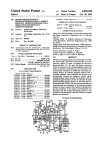


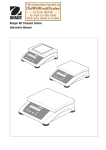
![[quote(var.text)]}](http://vs1.manualzilla.com/store/data/005937533_1-4dd3fe8a9b5a28fbfb6fbb268c8e3b66-150x150.png)
